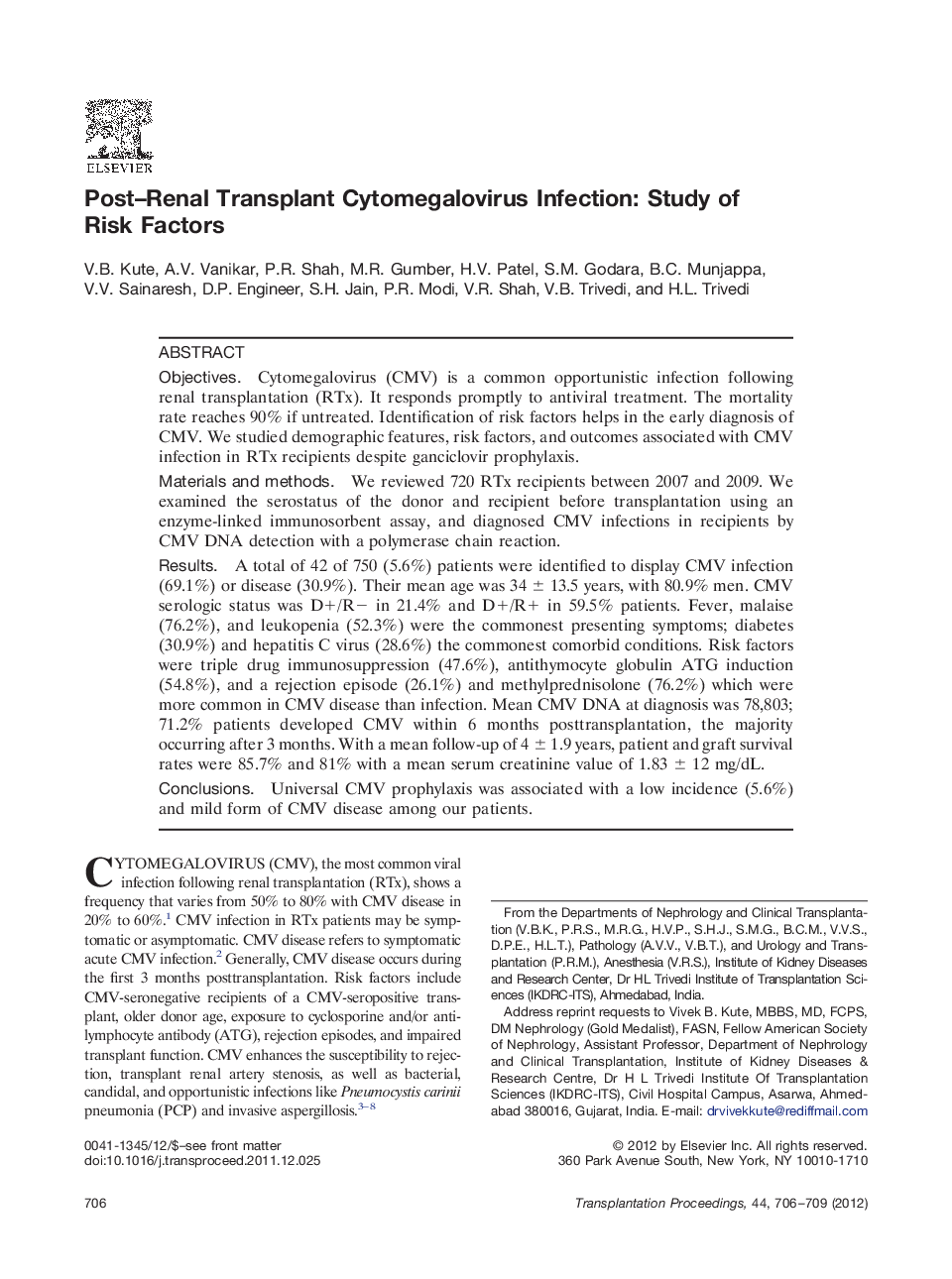| Article ID | Journal | Published Year | Pages | File Type |
|---|---|---|---|---|
| 4257774 | Transplantation Proceedings | 2012 | 4 Pages |
ObjectivesCytomegalovirus (CMV) is a common opportunistic infection following renal transplantation (RTx). It responds promptly to antiviral treatment. The mortality rate reaches 90% if untreated. Identification of risk factors helps in the early diagnosis of CMV. We studied demographic features, risk factors, and outcomes associated with CMV infection in RTx recipients despite ganciclovir prophylaxis.Materials and methodsWe reviewed 720 RTx recipients between 2007 and 2009. We examined the serostatus of the donor and recipient before transplantation using an enzyme-linked immunosorbent assay, and diagnosed CMV infections in recipients by CMV DNA detection with a polymerase chain reaction.ResultsA total of 42 of 750 (5.6%) patients were identified to display CMV infection (69.1%) or disease (30.9%). Their mean age was 34 ± 13.5 years, with 80.9% men. CMV serologic status was D+/R− in 21.4% and D+/R+ in 59.5% patients. Fever, malaise (76.2%), and leukopenia (52.3%) were the commonest presenting symptoms; diabetes (30.9%) and hepatitis C virus (28.6%) the commonest comorbid conditions. Risk factors were triple drug immunosuppression (47.6%), antithymocyte globulin ATG induction (54.8%), and a rejection episode (26.1%) and methylprednisolone (76.2%) which were more common in CMV disease than infection. Mean CMV DNA at diagnosis was 78,803; 71.2% patients developed CMV within 6 months posttransplantation, the majority occurring after 3 months. With a mean follow-up of 4 ± 1.9 years, patient and graft survival rates were 85.7% and 81% with a mean serum creatinine value of 1.83 ± 12 mg/dL.ConclusionsUniversal CMV prophylaxis was associated with a low incidence (5.6%) and mild form of CMV disease among our patients.
